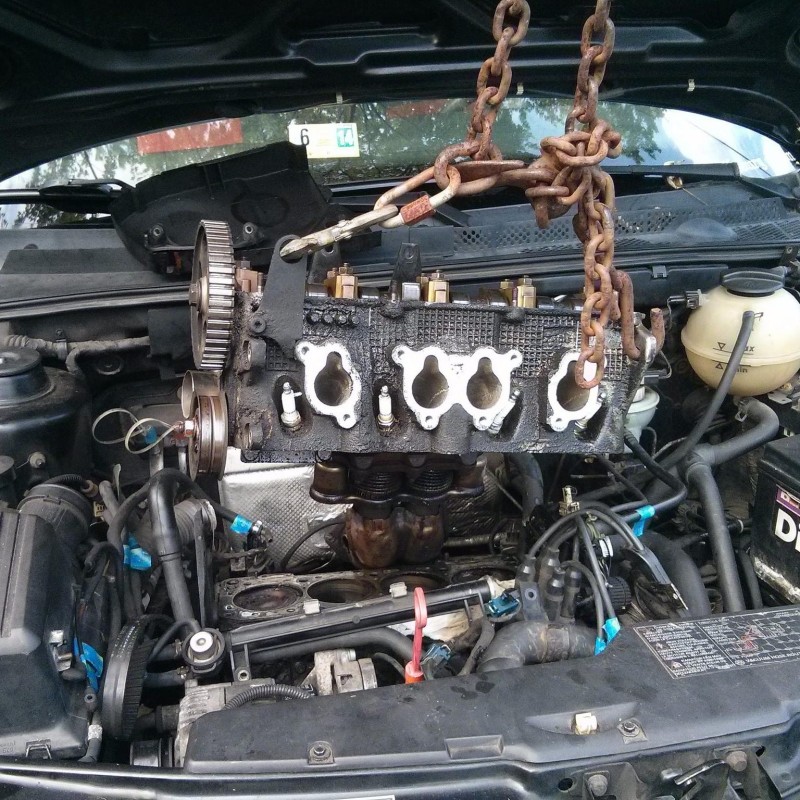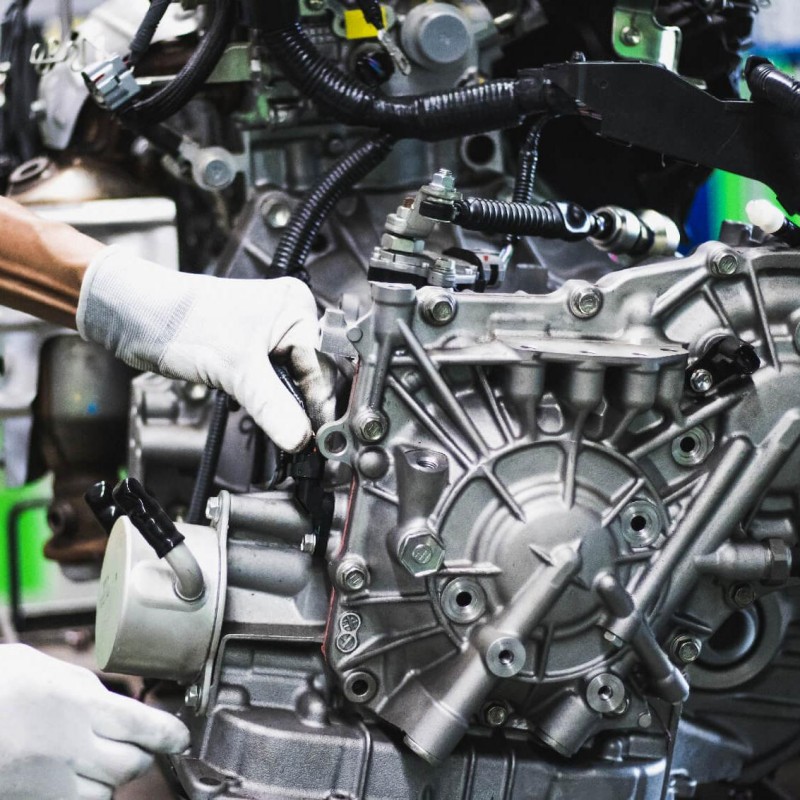Oil scavenge pumps in V8 engines play a critical role in maintaining proper lubrication and ensuring optimal performance. Within the intricate world of automotive engineering, these pumps are often overlooked; however, they are fundamental for ensuring efficiency and longevity. As V8 engines are designed for high performance, the oiling system must meet rigorous demands to ensure that the engine components function smoothly. These oil scavenge pumps remove excess oil from various parts of the engine, effectively collecting it and directing it back to storage. This cycle not only maintains a balanced oil level but also prevents oil starvation, which can lead to severe engine damage. In this article, we will explore the workings of oil scavenge pumps in V8 engines, the different types available, their significance in performance, maintenance practices, and technological advancements that enhance their functionality. By the end, readers will gain a comprehensive understanding of how these pumps contribute to the efficiency and durability of V8 engines.
Understanding the Basics of Oil Scavenge Pumps
To appreciate the role of oil scavenge pumps in V8 engines, it is essential first to understand what they are and how they operate within the lubrication system.
What is an Oil Scavenge Pump?
An oil scavenge pump is a specialized pump designed for collecting excess oil from various components of an engine, such as the oil pan, and efficiently returning it to the oil tank or reservoir. In high-performance applications, particularly in V8 engines, these pumps ensure that the oiling system functions efficiently.
The Functionality of Oil Scavenge Pumps
Oil moves through the V8 engine in a closed-loop system. The primary oil pump forces oil into various engine components to lubricate moving parts. However, during specific conditions, such as high speeds or aggressive maneuvers, excess oil may accumulate in areas where it can hinder performance. This is where oil scavenge pumps come into play. They utilize suction to extract excessive oil and channel it back to the oil tank, ensuring that distribution remains balanced.
The importance of these pumps cannot be overstated. When oil scavenge pumps function properly, they help maintain consistent oil pressure and prevent complications that could arise from excess oil.
The Importance of Oil Scavenge Pumps in V8 Engines
Preventing Oil Starvation
One of the most critical functions of oil scavenge pumps in V8 engines is to prevent oil starvation. When the engine operates in extreme conditions, such as during high-speed turns or rapid acceleration, oil can redistribute unevenly. If oil does not distribute properly, certain components might not receive adequate lubrication, leading to premature wear or catastrophic failure.
By ensuring that excess oil is quickly removed from areas where it can accumulate, scavenge pumps help maintain proper oil levels at critical lubrication points. As a result, maintaining consistent lubrication is vital for engine health and performance.
Enhancing Performance
In high-performance engines, optimal lubrication is key to unlocking maximum potential. Oil scavenge pumps in V8 engines enhance performance under various driving conditions by ensuring that oil remains at optimal levels.
When the engine is performing at peak levels, maintaining lubrication throughout extensive RPM ranges and minimizing oil drag is necessary. Scavenge pumps efficiently remove excess oil, thereby reducing resistance and enhancing overall performance. This becomes especially crucial in motorsport applications, where every fraction of a second counts.
Maintaining Engine Longevity
Regular and efficient lubrication directly correlates with engine longevity. V8 engines, known for their power and performance, require meticulous maintenance, and oil scavenge pumps play a crucial role in this maintenance cycle.
By constantly circulating oil and preventing pooling, these pumps help avoid the buildup of harmful deposits. Keeping the oil clean and properly dispensed also inhibits corrosion and wear, which ultimately leads to a longer lifespan for the engine overall.
Types of Oil Scavenge Pumps
It is important to note that not all oil scavenge pumps are created equal. Different types serve varying purposes, depending on engine requirements.
Gear Pumps
Gear pumps represent one of the most common types of oil scavenge pumps used in V8 engines. They consist of two gears; as they rotate, these gears trap oil and transport it from one side to the other. Gear pumps are recognized for their reliability and capability to produce strong suction, making them highly effective for scavenging oil.
Diaphragm Pumps
Diaphragm pumps utilize a flexible diaphragm to create suction. As the diaphragm flexes, it creates a pressure difference that draws oil into the pump. These pumps can handle various viscosities and are often used in situations where precise oil management is necessary.
Electric Scavenge Pumps
Electric scavenge pumps are becoming increasingly popular in performance V8 applications. They can be turned on or off based on engine demands, providing precise control over oil management. Electric pumps become particularly useful in preventing oil starvation situations by delivering immediate scavenging power.
Choosing the right type of pump is essential for achieving the desired performance and reliability in V8 engines.
Scavenging Techniques in V8 Engines
Wet Sump vs. Dry Sump Systems
The oil system design significantly influences how oil scavenge pumps operate in V8 engines. The two primary systems are wet sump and dry sump, each employing different scavenging techniques.
Wet Sump System
In a wet sump system, the oil pan holds a reserve of oil that the engine pump draws from. When excessive oil accumulates, the scavenge pump collects it from the oil sump section and redirects it back to the oil reservoir. While this system remains simple and effective for many applications, it may struggle under extreme performance conditions.
Dry Sump System
Dry sump systems, which are more common in high-performance engines, utilize separate oil tanks and multiple pumps. In this configuration, one pump feeds oil to the engine, while others scavenge oil from the engine and return it to the storage tank. This setup allows for superior oil control, making it ideal for performance applications where oil redistributes rapidly.
Understanding the differences between wet and dry sump systems enables users to select the appropriate oil scavenge pumps for their V8 engine configurations.
Scavenging During High-Performance Applications
High-performance engines demand responsive and efficient oil management. During driving situations like racing or aggressive cornering, oil often moves away from critical lubrication components. Specialized oil scavenge pumps adapt quickly to these conditions, ensuring adequate lubrication persists.
Advanced designs may include features such as adjustable pressure settings, which allow the pump to automatically adjust based on engine requirements.
Implementing Oil Scavenge Pumps in Engine Design
Integrating oil scavenge pumps into V8 engine designs requires careful engineering and planning.
Assessing Engine Performance Demands
When incorporating oil scavenge pumps into an engine design, it is crucial to assess performance demands. Understanding the engine’s expected RPM ranges, load, and driving conditions is necessary to ensure proper pump selection.
For instance, a V8 engine built for street applications will differ significantly from a race engine designed for track use. The latter may require a more robust system to manage oil pressure under high-stress conditions.
Selecting Appropriate Components
Choosing the right components becomes essential for effective oil scavenging. This includes the pump itself, the oil pan design, oil lines, and fittings.
High-performance oil pans might feature baffles or traps to keep oil properly distributed. Furthermore, using high-quality oil lines minimizes resistance and improves overall efficiency in oil flow.
Testing and Calibration
After implementing oil scavenge pumps in V8 engines, thorough testing is necessary. Monitoring oil pressure and temperature allows for proper functioning and identification of potential issues.
Calibration of the pumps based on these measurements is critical to achieving optimal performance. Maintaining clear oil flow and ensuring the engine remains well-lubricated will ultimately lead to success.
Maintenance of Oil Scavenge Pumps in V8 Engines
Regular maintenance of oil scavenge pumps is essential to ensure they function optimally throughout their service lives.
Routine Inspections
Conducting routine inspections of oil scavenge pumps helps pinpoint signs of wear, leakage, or damage. This includes checking for abnormal noises, vibrations, or decreased performance.
Drivers should also regularly inspect related components, such as oil lines and fittings, to prevent potential issues.
Oil Changes and Filters
Performing regular oil changes is essential for maintaining clean oil, which ensures optimal performance. When changing oil, drivers should also check the oil filter and replace it as needed. Clogged filters inhibit oil flow and can subject the scavenge pump to unnecessary strain.
Additionally, keeping oil clean helps prolong the life of the pump and the engine itself.
Monitoring Oil Temperature and Pressure
Monitoring oil temperature and pressure is crucial for the effective functioning of oil scavenge pumps. High temperatures may indicate that the oil is breaking down or that the engine is running inefficiently.
Using gauges and monitoring systems can provide valuable insights into the health of the engine and its oiling system.
Technological Advancements in Oil Scavenge Pumps
The automotive industry continually pushes the envelope when it comes to technology, and oil scavenge pumps are no exception.
Smart Oil Management Systems
Smart oil management systems gather real-time data from the engine and make intelligent adjustments to optimize performance. These systems can dynamically adjust pump function based on oil temperature and pressure, ensuring that oil scavenge pumps in V8 engines always operate under ideal conditions.
Enhanced Material Choices
Advancements in material technology have led to the development of more durable and efficient pumping components. Lightweight materials can improve performance while reducing strain on engine parts.
3D Printing for Custom Applications
3D printing technology has transformed the way engine components are designed and manufactured, allowing for customization in oil scavenge pumps. Manufacturers can now create custom pumps tailored to specific engine configurations quickly and economically, ensuring that each engine achieves its potential.
Conclusion
Oil scavenge pumps in V8 engines fulfill critical roles that extend far beyond merely removing excess oil. They play an integral part in ensuring optimal performance, preserving engine longevity, and preventing catastrophic failures due to oil starvation. Understanding the function, types, and maintenance of these pumps empowers engine builders and enthusiasts to make informed decisions that positively impact performance.
As automotive technology continues to advance, it becomes essential to stay informed about developments in oiling systems and pumps. With appropriate knowledge and maintenance, oil scavenge pumps can significantly enhance the reliability and performance of V8 engines. Ultimately, investing in high-quality oil scavenge pump systems stands as the key to unlocking the power and longevity that V8 engines are renowned for.
Tags: automotive technology, Engine Performance, lubrication systems